Sections:
- Bottled Water
- Climate Change
- Conservation Organizations
- Conservation Reports
- Conservation Tips
- Corporate Responsibility
- Databases
- Desalination
- Developing World
- Drinking Water Associations
- Drinking Water Orgs
- Drinking Water Quality
- Drinking Water/Reports
- Drought
- Education
- Events
- Footprints
- Hydrography
- Infrastructure
- Investment in
- News
- News /Industry
- Pollution
- Quality
- RainWater
- Reports
- Research Orgs
- Rivers
- Virtual Water
- Waste Water
The Amazon accounts for 20 percent of the worldwide flow of freshwater into the oceans. Bottled Water:
www.epa.gov
Environmental Protection Agency‘s Bottled Water Basics
(PDF 7pp, 1 M)
www.ewg.org
Environmental Working Group “Bottled Water Quality Investigation: 10 Major Brands, 38 Pollutants” Report finds Bottled water contains disinfection byproducts, fertilizer residue, and pain medication. October 2008. Climate Change:
pubs.usgs.gov
“Climate Change and Water Resources Management:
A Federal Perspective” The purpose of this interagency report prepared by the U.S. Geological Survey, U.S. Army Corps of Engineers, Bureau of Reclamation (Reclamation), and National Oceanic and Atmospheric Administration is to explore strategies to improve water management by tracking, anticipating, and responding to climate change. Jan 2009.
www.gwsp.org
Global Water System Project provides policy-informing results, specifically targeting issues pertaining to the global aspects of environmental change. GWSP analyses the impacts of human activities on the Global Water System, emphasising the interactions and feedback between the global and the regional scale. GWSP research supports global assessments of water, and the development of adaptation strategies with appropriate scientific basis and international consensus. Conservation Organizations: see Conservation Tips as well…
www.unesco.org
United Nations. Educational, Scientific and Cultural Organization. Water Portal. Information on freshwater.
www.wmo.int
World Meteorological Organization (WMO) is a specialized agency of the United Nations. It is the UN system’s authoritative voice on the state and behaviour of the Earth’s atmosphere, its interaction with the oceans, the climate it produces and the resulting distribution of water resources.
www.nal.usda.gov
Water Quality Information Center of the National Agricultural Library. Conservation Effects Assessment Project (CEAP) provides electronic access to information on water quality and agriculture. The center collects, organizes, and communicates the scientific findings, educational methodologies, and public policy issues related to water quality and agriculture.
wmc.ar.nrcs.usda.gov
Natural Resources Conservation Service‘s National Water Management Center web site, serves as the production support center for NRCS, providing leadership, direct assistance, information, and technology on water-related issues for natural resources conservation.’
www.worldwater.org
Worldwater.org is dedicated to providing information and resources to help protect and preserve freshwater around the globe. Yearly fresh water reports.
www.wef.org
Water Environment Federation is a not-for-profit technical and educational organization formed 1928, with more than 34,000 individual members and 81 affiliated Member Associations representing an additional 50,000 water quality professionals throughout the world. WEF’s mission is to preserve and enhance the global water environment. News, articles, and educational information on water quality.
www.cleanwaternetwork.org
Clean Water Network is a coalition of more than 1,200 public interest organizations across the country, representing more than 5 million people, working together to strengthen and implement federal clean water and wetlands policy. It is the largest national coalition working to defend and strengthen the federal Clean Water Act.
www.cleanwateraction.org
Clean Water Action‘s more than 1.2 million members, volunteers and seasoned professional staff have been critical in shaping and strengthening laws such as the Clean Water Act, the Safe Drinking Water Act and the Superfund for toxics cleanup.’
www.waterandclimate.org
Co-operative Programme on Water and Climate aims to stimulate activities in the water sector that contribute to managing the effects of climate variability and change, in particular for the most vulnerable communities by building bridges between water managers and the climate community.
www.awwa.org
American Water Works Association’s Water Conservation Division- Water Wiser Site- links users to; a WaterWiser Discussion Forum, an Event Calendar, a searchable listing of educational programs, conservation products in the AWWA Bookstore and The Water Library, access to conservation references, free Water Audit software.
www.conservation.org
Conservation International with their partners, are trying to stop the devastation in critical freshwater habitats around the world. In dozens of countries, they are working with various sectors to ensure activities such as manufacturing, mining, and tourism don’t interfere unnecessarily with freshwater resources. Many local or indigenous communities have invited CI to support their efforts to make sure their much-needed freshwater supplies are used appropriately and sustainably.
www.usawaterquality.org
National Water Program– of the Land-Grant University System. In partnership with CSREES, works to improve the quality of our nation’s water resources.
www.worldwatercouncil.org
World Water Council‘s mission is to promote awareness, build political commitment and trigger action on critical water issues at all levels, including the highest decision-making level, to facilitate the efficient management and use of water in all its dimensions and on an environmentally sustainable basis.
www.groundwater.org
The Groundwater Foundation. A non-profit organization educating and motivating people to care for and about groundwater.
www.freshwater.org
Freshwater Society, a nonprofit organization dedicated to conserving, restoring, and protecting freshwater resources and their surrounding watersheds.
waterheritagetrust.org
Water Heritage Trust uses a unique process of water rights acquisition, WHT acquires by gift, purchase, lease, or trade, water rights to be permanently managed for environmental protection and for recreational opportunities.
www.worldwildlife.org
World Wildlife Fund’s Conservation Science Program draws on powerful insights from biology, hydrology, oceanography and the social sciences to create new and effective approaches for protecting biodiversity. Numerous programs helping to protect our water.
www.nrcs.usda.gov
USDA Natural Resources Conservation Service‘s Agricultural Water Enhancement Program is a voluntary conservation initiative that provides financial and technical assistance to agricultural producers to implement agricultural water enhancement activities on agricultural land for the purposes of conserving surface and ground water and improving water quality. Siberia’s Lake Baikal has warmed 1.21 degrees Celsius (2.18 degrees Fahrenheit) since 1946. The lake holds 20 percent of the world’s freshwater, large enough to contain all the waters in the Great Lakes….
www.nsf.gov Conservation Reports:
www.nal.usda.gov
Water Quality Information Center at the National Agricultural Library. Conservation Effects Assessment Project (CEAP). Publications.
www.waterandclimate.org
Co-operative Programme on Water and Climate. Papers on Water and Climate; Water and Climate Risks – A plea for climate proofing of water development strategies and measures- March 2006.
www.siwi.org
Stockholm International Water Institute “Saving Water: From Field to Fork — Curbing Losses and Wastage in the Food Chain.” PDF. Conservation Tips:
www.epa.gov/watersense
Environmental Protection Agency.
Water Sense labeled products, water-efficient practices.
www.getwise.org
National Energy Foundation‘s Water Wise & Energy Efficient Program helps visitors learn ways to conserve water and energy by providing helpful savings tips, links to local resources, and well-designed products. It takes 16,000 liters of water to produce a kilogram of beef,
while just 1,000 is needed to produce a loaf of bread. Corporate Responsibility:
bsr.org
Business for Social Responsibility and the Pacific Institute have partnered to produce this Trends Report – “At the Crest of a Wave: A Proactive Approach to Corporate Water Strategy”- for companies which details a proactive approach to corporate water strategy. PDF.
www.bsr.org
Sustainable Water Group is dedicated to responsible practices around water use and wastewater discharge in global textile and apparel supply chains. Business for Social Responsibility. “Nearly one third (1,856 species) of the world’s amphibian species are threatened with extinction,
a large portion of which (964 species) are from fresh water, especially flowing freshwater habitats.”
“Ecosystems & Human Well-being: Wetlands & Water” Millennium Ecosystem Assessment. Databases:
waterdata.usgs.gov
USGS Water Data for the Nation, water-resources data collected at approximately 1.5 million sites in U.S. Real-time Data. Ground water, surface water, water quality data.
water.usgs.gov
USGS Water information- Publications, data, maps, and applications software. USGS Water-Resources offices are located in every State. Search by State.
www.epa.gov
EPA’s Drinking Water Data & Databases. The EPA maintains drinking water data in several databases, including the Safe Drinking Water Information System – Federal Version and the National Contaminant Occurrence Database.
www.nal.usda.gov
EPA’s Databases relating to water and agriculture.
www.epa.gov
EPA Assessment and Monitoring of marine and coastal waters nationwide to protect human health and the marine environment. Our monitoring programs evaluate short and long-term impacts and assess trends to the marine environment. Resulting information and data provide a critical link to oceans and coastal pollution control and management programs.
earthtrends.wri.org
World Resources Institute, non profit, center for policy research and analysis of global resource and environmental issues. Water Resources and Freshwater Ecosystems- Searchable Database.
www.wmo.int/pages
World Meteorological Organization (WMO) is a specialized agency of the United Nations. Hydrology and Water Resources Programme. Data. Links to the Websites of National Hydrological and Hydrometeorological Services or to other national bodies in charge of operational hydrology and water-resources assessment activities.
www.ewg.org
Environmental Working Group. National Tap Water Quality Database. Contaminants Database, Search by Water Company, National Survey.
atlas.gwsp.org
Global Water System Project Digital Water Atlas currently contains 50 global maps and datasets on water-related topics and more than 100 links to other data and information sources. The project eventually will deliver a series of reports describing and mapping key indicators of the state of the Global Water System across paleo, historical, and contemporary time horizons as well as possible future time horizons derived from scenario analysis.
www.ams.usda.gov
USDA Agricultural Marketing Service. Pesticide Data Program. Drinking Water Project. Water samples are collected by water treatment facilities in 14 States plus the District of Columbia and are mailed to PDP laboratories for multiresidue pesticide analyses.
www.nal.usda.gov/wqic
Water Quality Information Center at the National Agricultural Library. Conservation Effects Assessment Project (CEAP) provides electronic access to information on water quality and agriculture.
gwi.memphis.edu
Ground Water Institute Library Database Institute at the University of Memphis- environmental data archives- lists government publications, textbooks, videos and thesis/dissertations. Seem to have recently made most info private…
water.usgs.gov/nwc
U.S. Geological Survey– National Water Conditions- Historical Maps of Monthly and Annual Streamflow Conditions by Water Year.
www.utsc.utoronto.ca
Urban Groundwater Database. This database provides brief descriptions of a wide variety of cities and their groundwater issues, together with contacts and references. User contributed. Less than 50 worldwide cities listed, but detailed, interesting info.
www.interleaves.org
Water Librarians’ Home Page. Serving water scientists, engineers, and librarians since 1996. Maintained by a librarian in a California water agency. Lots of good resources.
cedb.asce.org
American Society of Civil Engineers. Civil Engineering Database. Provides Access to over 100,000 Bibliographic and Abstracted Records.
www.agiweb.org
GeoRef database, established by the American Geological Institute contains over 3 million references to geoscience journal articles, books, maps, conference papers, reports and theses.
www.epa.gov/enviro
EPA’s Envirofacts– find your watershed, and pollution in your area by zip code, maps.
www.nal.usda.gov
USDA National Agriculture Library. Long list of databases that are related to water and agriculture. ***
www.ndwc.wvu.edu
National Environmental Services Center at West Virginia University. Drinking water and Wastewater database.
www.ndwc.wvu.edu
Outreach Resource Guide: A Directory of Small Community Drinking Water Information (pdf) -descriptions of more than 80 federal agencies and national organizations and programs that have interests in drinking water issues. National Environmental Services Center. PDF.
www.worldwildlife.org
Freshwater Ecoregions of the World (FEOW) project is a collaborative effort between WWF and The Nature Conservancy, FEOW creates the first-ever comprehensive map and database describing the world’s freshwater biodiversity. Encompassing virtually all of the Earth’s freshwater systems, the map and associated species data are vital tools for conservationists working to save the world’s freshwater ecosystems.
www.nrcs.usda.gov
Natural Resources Conservation Service‘s Snow Survey and Water Supply Forecasting provides western states and Alaska with information on future water supplies. NRCS field staff collect and analyze data on depth and water equivalent of the snowpack at more than 1,200 mountain sites and estimate annual water availability, spring runoff, and summer streamflows. In the U.S. up to 33 percent of domestic water is used to flush toilets.
www.nytimes.com Desalination:
www.gewater.com
GE‘s Algerian Hamma Seawater Desalination Plant (SWDP) uses GE’s ecomagination-certified reverse osmosis membranes to purify up to 200,000 cubic meters (53 million gallons) of seawater per day.
www.fastcompany.com
“Water Desalination: The Answer to the World’s Thirst?” Article-Fast Company Magazine. Jan 15, 2009. ‘China, India, Bangladesh, Nepal, Pakistan, Thailand, Myanmar, Laos, Cambodia and Vietnam,
some 47% of the world’s population, are dependent on water arising from the Tibetan plateau.’
www.atimes.com Developing World:
www.playpumps.org
PlayPumps International is a 501(c) 3 organization in the U.S. with a partner organization called Roundabout Water Solutions in South Africa. Together, they provide schools and communities throughout Africa with an innovative, uniquely sustainable, free supply of clean drinking water. A mission of installing 4,000 PlayPump® water systems in 10 countries in sub-Saharan Africa by 2010, bringing the benefits of clean water to up to 10 million people. !!!
www.tide-india.org
Technology Informatics Design Endeavour (TIDE) is an organization devoted to sustainable development through technological interventions. It is a registered not-for-profit society set up in 1993 and registered under the Societies Registration Act. We envisage development as a process that meets the needs of the neediest, is in harmony with the environment, permits grass root participation, uses local resources and builds local capacity. Water projects.
www.mm.dk
The Blue Revolution: Adapting to Climate Change Essay published by Copenhagen Climate Council and Monday Morning, 2010. If mitigation is about energy, adaptation is about water. By Torkil Jønch Clausen of DHI and Carsten Bjerg, CEO of Danish technology provider Grundfos. The essay highlights the urgent need for effective measures to protect the worlds most vulnerable communities from the effects of floods, extreme wheather, drought and rising sea levels. In the U.S. bottled water has become a 22 Billion dollar a year business. Drinking Water Associations:
www.awwa.org
American Waterworks Association is an international nonprofit and educational society and the largest and oldest organization of water professionals in the world. Its more than 60,000 members represent the full spectrum of the water community: treatment plant operators and managers, scientists, environmentalists, manufacturers, academicians, regulators, and others who hold genuine interest in water supply and public health. News, research, and extensive resources for water system managers.
www.ngwa.org
National Ground Water Association is an organization for anyone affiliated with the ground water industry. A nonprofit organization, NGWA is comprised of 14,000 U.S. and international ground water professionals.
www.wqa.org
Water Quality Association, a not-for-profit international trade association representing the residential, commercial, industrial, and small community water treatment industry.
www.nrwa.org
National Rural Water Association. America’s Largest Utility Membership. Serving Over 26,696 Water & Wastewater Utilities. A non-profit federation of State Rural Water Associations whose mission is to provide support services to State Associations who have more than 26, water and wastewater systems as members.
www.awra.org
American Water Resources Association is a non-profit professional association dedicated to the advancement of men and women in water resources management, research, and education.
www.wef.org
Water Environment Federation, est 1928, is a not-for-profit technical and educational organization with 35,000 individual members and 81 affiliated Member Associations representing an additional 50,000 water quality professionals throughout the world. Drinking Water Orgs: see conservation & research as well…
www.epa.gov
EPA’s Office of Ground Water & Drinking Water protects public health by ensuring safe drinking water and protecting ground water. OGWDW, along with EPA’s ten regional drinking water programs, oversees implementation of the Safe Drinking Water Act, which is the national law safeguarding tap water in America.
www.drinking-water.org
U.S.National Academy of Sciences and the Global Health and Education Foundation. Proposes what can be done to supply the world with safe drinking water. Divided by sources, treatment and distribution.
www.cleanwaterfund.org
Clean Water Fund has helped people campaign successfully for cleaner and safer water, cleaner air, and protection from toxic pollution in our homes, neighborhoods and workplaces. Since 1978, Clean Water Fund’s mission has been to develop strong grassroots environmental leadership and to bring together diverse constituencies to work cooperatively to ensure healthier lives.
www.foodandwaterwatch.org
Food & Water Watch is a nonprofit consumer organization that works to ensure clean water and safe food. We challenge the corporate control and abuse of our food and water resources by empowering people to take action and by transforming the public consciousness about what we eat and drink.
water.usgs.gov/nawqa
USGS National Water-Quality Assessment Program (NAWQA) provides an understanding of water-quality conditions and how those conditions may vary locally, regionally, and nationally; whether conditions are getting better or worse over time; and how natural features and human activities affect those conditions.
www.ipwr.org
Institute for Public Health and Water Research, a not-for-profit, independent science and education organization aims to improve public health through the consumption of quality drinking water. The IPWR provides scientific direction, funds and other support to investigators to encourage research, publications and meetings.
www.nesc.wvu.edu
National Drinking Water Clearinghouse is a public service organization dedicated to helping small communities by collecting, developing, and providing timely information relevant to drinking water issues. Provides free and low-cost publications, products, databases, referrals, and more. ‘The average U.S. resident’s daily consumption of water is 159 gallons,
while more than half the world’s population lives on 25 gallons.’
www.mindfully.org Drinking Water Quality:
www.epa.gov/safewater
EPA‘s Drinking Water Standards.
www.epa.gov/safewater/dwh
EPA‘s Drinking Water and Health: What you need to know.
www.ewg.org
Environmental Working Group. A National Assessment of Tap Water Quality.
www.epa.gov/safewater/lead
EPA. Lead in Drinking Water Info.
www.epa.gov/safewater/pws
EPA‘s Public Drinking Water Systems Programs. Regulations of the public water supply.
www.epa.gov
EPA. National Contaminant Occurrence Database. Developed to satisfy the statutory requirements set by Congress to maintain a national drinking water contaminant occurrence database using samples data for both regulated and unregulated contaminants in public water systems.
www.epa.gov/waterscience
EPA‘s National Nutrient Database stores and analyzes nutrient water quality data and serves as an information resource for establishing scientifically defensible numeric nutrient criteria.
water.usgs.gov
U.S. Geological Survey– Water-Quality Information Pages.
Lots here. ***
water.usgs.gov/nawqa/pnsp
USGS‘s National Water-Quality Assessment (NAWQA) Program- Pesticide National Synthesis Project is a national-scale assessment of the occurrence and behavior of pesticides in streams and ground water of the United States and the potential for pesticides to adversely affect drinking-water supplies or aquatic ecosystems.
www.ces.purdue.edu
Purdue Extension Water Quality Program– information you need, whether you are a farmer, consumer, private well owner, parent concerned about your family’s drinking water, or someone working to protect your community’s environment. “Rising demand by irrigated agriculture now accounts for 70 per cent of freshwater withdrawals
with only 30 per cent of this returned to the environment.”
www.unep.org Drinking Water/Reports: see pollution reports below as well…
www.ewg.org/tapwater
Environmental Working Group.
A National Assessment of Tap Water Quality.
www.siwi.org
United Nations Food and Agriculture Organization, International Water Management Institute, and Stockholm Water Management Institute. “Saving Water: From Field to Fork — Curbing Losses and Wastage in the Food Chain” May 2008. PDF.
www.transparency.org
Transparency International. Global Corruption Report 2008
Water and corruption: a destructive partnership.
water.nationalacademies.org
National Academy of Sciences Water Information Center. Drinking Water Basics. “Drinking Water: Understanding the Science and Policy behind a Critical Resource.”
cfpub.epa.gov
US EPA’s National Center for Environmental Assessment. Data; Publications. Numerous reports,papers, etc…
www.sustainableproduction.org
“Cancer, Air and Water Pollutants” Lowell Center for Sustainable Production. Prepared by the Lowell Center for testimony to the President’s Cancer Panel about the state of the evidence on chemicals linked to cancer. 2009. PDF. Drought:
ndmc.unl.edu
National Drought Mitigation Center helps people and institutions develop and implement measures to reduce societal vulnerability to drought, stressing preparedness and risk management rather than crisis management. Most of the NDMC’ s services are directed to state, federal, regional, and tribal governments that are involved in drought and water supply planning. University of Nebraska-Lincoln. ‘Coal currently accounts for 52% of U.S. electricity generation,
and each kWh generated from coal, requires a withdrawal of 25 gallons of water.’
www.sandia.gov Education:
www.nal.usda.gov/wqic/edu
USDA. National Agriculture Library. Educational Resources on the Environment. Water Quality Information Center. Describes educational publications and programs on water quality, natural resources, and the environment. ***
www.epa.gov/OW/kids
EPA, Office of Water. Projects, art and experiments to involve kids and students with environmental protection.
www.epa.gov/safewater/kids
EPA, Drinking Water & Ground Water Kids’ Stuff. Education materials available. Experiments for grades K – 12.
ga.water.usgs.gov/edu
US Geological Survey: Water Science for Schools. Information on many aspects of water, including an interactive center where you can give opinions and test your water knowledge. High School and up. Some lessons in Spanish as well.
www.watereducation.org
Water Education Foundation, is an impartial non-profit organization creating a better understanding of water issues and helping resolve water resource problems through educational programs.
www.waterontheweb.org
Water on the Web (WOW) helps college and high school students understand and solve real-world environmental problems using advanced technology. WOW, Basic Science and Water Resource Science Programs.
www.amnh.org
Center for Biodiversity and Conservation, American Museum of NH. Water: H2O = Life exhibition guide divides the exhibition into eight numbered areas. Each area is supported by an overview, highlights to explore, and guiding questions.
www.ihe.nl
UNESCO-IHE Institute for Water Education is an international institute for water education that was established in 2003. It carries out research, education and capacity building activities in the fields of water, environment and infrastructure. Events:
www.conferencealerts.com
Water Conferences Worldwide. Upcoming events in water management and related fields. Wow ! Lots here. A gallon of water weighs 8.33 lbs.
A liter of water weighs 2.2 lbs. Footprints:
www.waterfootprint.org
Water Footprint Network- the ‘water footprint’, a spatially and temporally explicit indicator of direct and indirect water use of consumers and producers was originally set up at UNESCO- IHE. National water footprints, corporate 7 personal water footprints, product footprints, case studies of coffee and tea, and cotton, international flows of virtual water, savings or excess use of water due to trade, water footprint per unit of energy, etc. *** 97.9% of Earth’s water is in a liquid state,
2.1% in a solid state and .001% as water vapor. Hydrography: see Oceans as well…
nhd.usgs.gov
USGS. National Hydrography Dataset is a comprehensive set of digital spatial data that contains information about surface water features such as lakes, ponds, streams, rivers, springs and wells.
disc.gsfc.nasa.gov
NASA Goddard Earth Sciences Data. Hydrology Portal.
www.clivar.org
CLIVAR International Project Office- CLIVAR/Carbon
Hydrographic Sections. The basis for determining oceanic heat and freshwater transports.
www.epa.gov
EPA‘s EnviroMapper for Water is a web-based Geographic Information System (GIS) application that dynamically displays information about bodies of water in the United States.
www.whycos.org
World Hydrological Cycle Observing System (WHYCOS) is a WMO (see below) programme aiming at improving the basic observation activities, strengthening the international cooperation and promoting free exchange of data in the field of hydrology.
www.wmo.int
World Meteorological Organization (WMO) is a specialized agency of the United Nations. Hydrology and Water Resources Programme. Links to the Websites of National Hydrological and Hydrometeorological Services or to other national bodies in charge of operational hydrology and water-resources assessment activities Eight out of 10 plastic water bottles end up as landfill waste. Electricity generation accounts for nearly half of all water withdrawals in the nation-
irrigation comes in second at 34%.
www1.eere.energy.gov.pdf Infrastructure:
www.wef.org
Water Is Life, and Infrastructure Makes It Happen™ is a program designed to assist water and wastewater service providers in communicating the value of our nation’s water and wastewater infrastructure. The initiative is an on-going public education program of the Water Environment Federation with support from the National Association of Clean Water Agencies.
www.uli.org
Infrastructure 2010: Investment Imperative. Urban Land Institute and Ernst & Young challenges the United States to treat infrastructure like the investment that it is, by developing a targeted, long-term, and integrated infrastructure strategy. The report puts the spotlight on water infrastructure, examining aging pipes, population pressures, and management challenges across 14 metropolitan areas. Investment in Water:
www.epa.gov
U.S. Environmental Protection Agency‘s Gap Report- “Gap Analysis” a study to identify whether there is a quantifiable gap between projected clean water and drinking water investment needs over the twenty-year period from 2000 to 2019 and current levels of spending. The analysis found that a significant funding gap could develop if the nation’s clean water and drinking water systems maintain current spending and operations practices. 2002. PDF. 4.8 billion gallons of water is flushed down U.S. toilets every day.
U.S. Environmental Protection Agency’s Office of Water News: see also Industry news below
www.epa.gov/water
Environmental Protection Agency‘s Office of Water.
Portal Page. Lists EPA and Regional news as well.
www.epa.gov/water/waternews
Environmental Protection Agency‘s Water Headlines is a weekly on-line publication that announces publications, policies, and activities of the U.S. Environmental Protection Agency’s Office of Water.
www.ewg.org
Environmental Working Group. Health/Toxics: Drinking Water News.
www.circleofblue.org
Circle of Blue. An international network of leading journalists, scientists and communications design experts that reports and presents the information necessary to respond to the global freshwater crisis. It is a nonprofit affiliate of the water, climate and policy think tank, the Pacific Institute.
www.medicalnewstoday.com
Medical News Today. Water/Air Quality/Agriculture News. RSS Feeds.
water.usgs.gov/nawqa
National Water-Quality Assessment Program. Featured Headlines, Activities, and Publications.
www.nal.usda.gov/wqic
Water Quality Information Center at the National Agricultural Library. News.
www.eurekalert.org
EurekAlert! is an online, global news service operated by AAAS, the science society. EurekAlert! provides a central place through which universities, medical centers, journals, government agencies, corporations and other organizations engaged in research can bring their news to the media. News/ Industry News:
www.watertechonline.com
WaterTech Online, Drinking Water News Page. Technology and product news, sales and marketing info, business management tips, and interviews with industry leaders.
ww.pennnet.com
WaterWorld Magazine, Industrial WaterWorld and Water & Wastewater International – an online news and technology source serving engineers, managers, and consultants in the Water/Wastewater Industry Worldwide.
www.waterwebster.org
WaterWebster provides safe drinking water and wastewater news, research and information free of charge.
www.uswaternews.com
U.S. Water News. Industry News. Sign up for weekly mail.
www.water-technology.net
Water Technology provides the latest in news, views and project information from the water industry internationally, covering industrial and municipal wastewater treatment and water supply and transmission.
www.ndwc.wvu.edu
On Tap Magazine. The National Drinking Water Clearinghouse. Magazine of small community drinking water treatment issues; technical, financial, operations and maintenance, management, source water protection, and health issues relevant to small drinking water systems. Giant squids have been known to descend to 6,500 feet. Pollution Reports/News:
www.whoi.edu
Woods Hole Oceanographic Institution. Pollution reports, papers, info. ***
www.ncseonline.org
National Council for Science and the Environment. CRS Report for Congress. “Clean Water Act: A Summary of the Law” 17-Mar-2008. PDF.
www.ncseonline.org
National Council for Science and the Environment. CRS Report for Congress. “Perchlorate Contamination of Drinking Water: Regulatory Issues and Legislative Actions” 22-May-2008. PDF.
www.ncseonline.org
National Council for Science and the Environment, CRS Report- “Animal Waste and Water Quality: EPA Regulation of Concentrated Animal Feeding Operations (CAFOs)” 28-Nov-2007. PDF.
www.ncseonline.org
National Council for Science and the Environment, CRS Report- “Pesticide Use and Water Quality: Are the Laws Complementary or in Conflict?” 14-Jun-07 This report provides background on the emerging conflict over interpretation and implementation of the Federal Insecticide, Fungicide, and Rodenticide Act and the Clean Water Act. PDF.
www.publicintegrity.org
Center for Public Integrity review of the Centers for Disease Control and Prevention’s Report; “Public Health Implications of Hazardous Substances in the Twenty-Six U.S. Great Lakes Areas of Concern”.
www.slate.com
Slate. Scrubbing Out Sea Life, exfoliating plastic beads feel good—unless you live in the ocean. By Hillary Rosner “The amount of “microplastic”—fragments smaller than 1 millimeter— in the oceans has “increased significantly” over the last few decades, according to Browne, who found that 85 percent of the plastic debris in one British estuary was micro.”
www.sustainableproduction.org
“Cancer, Air and Water Pollutants” Lowell Center for Sustainable Production. Prepared by the Lowell Center for testimony to the President’s Cancer Panel about the state of the evidence on chemicals linked to cancer. 2009. PDF.
www.epa.gov/ppcp
Environmental Protection Agency. Pharmaceuticals and Personal Care Products as Pollutants (PPCPs); studies have shown that pharmaceuticals are present in our nation’s waterbodies.
www.epa.gov/ppcp
Environmental Protection Agency. Origins and Fate of Pharmaceuticals and Personal Care Products in the Environment. An illustrated poster produced by the National Exposure Research Lab. PDF.
www.nanotechproject.org
“Where Does the Nano Go? End-of-Life Regulation of Nanotechnologies” Project on Emerging Nanotechnologies, July 2007.
www.physorg.com
“Manufacturers release tons of pharmaceuticals into US water supplies” Associated Press Writers April 20, 2009. U.S. manufacturers, including major drugmakers, have legally released at least 271 million pounds of pharmaceuticals into waterways that often provide drinking water – contamination the federal government has consistently overlooked, according to an Associated Press investigation.
www.riverkeeper.org
“Fractured Communities — Case Studies of the Environmental Impacts of Industrial Gas Drilling” RiverKeeper — Federal and state regulators have documented significant environmental impacts resulting from industrial gas drilling operations nationwide. These impacts include contamination to groundwater, drinking water, surface water, air and soil and result from changes in land use, roadbuilding, water withdrawals, improper cementing and casing of wells, over-pressurized wells, gas migration from new and abandoned wells, the inability of wastewater treatment plants to treat flowback and produced water, underground injection of brine wastewater, improper erosion and sediment controls, truck traffic, compressor stations, as well as accidents and spills. 2010.
www.nytimes.com
“As EPA Moves to Regulate Perchlorate, Groups Await Pentagon Response” Oct 4, 2010. Even as they cheer U.S. EPA’s first steps toward a drinking water standard for perchlorate, environmental and public health groups are warily predicting Pentagon and industry resistance to proposed limits on the rocket fuel chemical during a behind-the-scenes federal review process.” Quality: also see pollution above
www.epa.gov/enviro
EPA’s Envirofacts– find your watershed, and pollution in your area by zip code, maps. ***
water.usgs.gov/nawqa/pnsp
USGS‘s National Water-Quality Assessment (NAWQA) Program- Pesticide National Synthesis Project is a national-scale assessment of the occurrence and behavior of pesticides in streams and ground water of the United States and the potential for pesticides to adversely affect drinking-water supplies or aquatic ecosystems.
www.cleanwaternetwork.org
Clean Water Network (CWN) is a coalition of more than 1,200 public interest organizations across the country, representing more than 5 million people, working together to strengthen and implement federal clean water and wetlands policy. It is the largest national coalition working to defend and strengthen the federal Clean Water Act.
www.heartlandwq.iastate.edu
Heartland Regional Water Coordination Initiative is a partnership of Iowa State University, Kansas State University, the Univ of Missouri, and the Univ of Nebraska-Lincoln, the USDA Cooperative State Research, Education and Extension Service and U S EPA Region 7. The goal of the Heartland Initiative is to build institutional partnerships and increase the capacity of citizens, educators, agencies and community leaders to better address water quality concerns.
www.usawaterquality.org
National Water Program– of the Land-Grant University System. In partnership with CSREES, works to improve the quality of our nation’s water resources.
www.ces.purdue.edu
Purdue Extension Water Quality Program– information you need, whether you are a farmer, consumer, private well owner, parent concerned about your family’s drinking water, or someone working to protect your community’s environment.
www.ces.ncsu.edu
NC State University, Consumer Horticulturist. Numerous water quality links. RainWater:
www.twdb.state.tx.us
Texas Manual on Rainwater Harvesting. Good information, plus, pictures of projects. PDF. Reports: see Conservation and Developing world above also…
riley.nal.usda.gov/wqic
Water Quality Information Center at the National Agricultural Library. Alphabetical Listing of 1,800 documents. ***
water.usgs.gov/nawqa
USGS’s National Water-Quality Assessment Program. Long list of publications and research studies. ***
water.usgs.gov
U.S. Geological Survey- National Research Program. Publications List, by year.
www.nap.edu
U.S. Geological Survey “Toward a Sustainable and Secure Water Future: A Leadership Role for the U.S. Geological Survey” calls on the organization to refocus its vision on critical national water priorities, and to redefine its role and integrate its programs and projects to meet the nation’s needs. May 2009.
www.sandia.gov
U.S. Department of Energy. “Energy Demands on Water Resources, Report to Congress on the Interdependency of Energy and Water” December 2006. These two critical natural resources are closely linked – the production of energy requires large volumes of water while the treatment and distribution of water is equally dependent upon readily available, low-cost energy.
water.nationalacademies.org
National Academy of Sciences Water Information Center. Over 100 reports offering advice on water-related issues in the United States and abroad. These reports are peer reviewed and represent the consensus of experts from academia, industry, and government.
www.unep.org
Global International Waters Assessment Report. United Nations Environment Programme. “Freshwater Shortages, Engineering of River Flows, Pollution and Overfishing Highlighted in Final Global International Waters Assessment” 2006.
www.sandia.gov
Sandia National Laboratory. Energy-Water Nexus Overview. U.S. Energy Sustainability,The Missing Piece. The Energy-Water Connection.
www.usda.gov
“The Effects of Climate Change on Agriculture, Land Resources, Water Resources, and Biodiversity in the United States” U.S. Climate Change Science Program. May 2008. PDF.
www.waterfootprint.org
Water Footprint Network. Long list of resources, journal articles, papers, reports as to water use/water footprints. UNESCO. ***
www.grida.no
Vital Water Graphics – 2nd Edition (2008) – A UNEP Overview of the State of the World’s Fresh and Marine Waters- graphics, maps and other illustrations, of the current state of the world’s fresh, coastal and marine waters.
www.wbcsd.org
“Water, Energy and Climate Change: A contribution from the business community” says water, energy and climate change are inextricably linked. World Business Council for Sustainable Development. Mar 2009. An ice layer floating on a large body of water will never exceed 2 meters.
But, in the Arctic thicker ice can accumulate due to ice colliding. Research- Government and UN:
www.noaa.gov
National Oceanic and Atmospheric Administration. “From daily weather forecasts, severe storm warnings and climate monitoring to fisheries management, coastal restoration and supporting marine commerce, NOAA’s products and services support economic vitality and affect more than one-third of America’s gross domestic product. NOAA’s dedicated scientists use cutting-edge research and high-tech instrumentation to provide citizens, planners, emergency managers and other decision makers with reliable information they need when they need it.”
www.usgs.gov
U.S.Geological Survey focuses on biology, geography, geology, geospatial information, and water, dedicated to the timely, relevant, and impartial study of the landscape, our natural resources, and the natural hazards that threaten us.”
www-esd.lbl.gov
Lawrence Berkeley National Laboratory. The Environmental Remediation Program conducts research focused on characterization, monitoring, and modeling of subsurface environments, with a particular emphasis on contaminant remediation and water resources.
hydrology.pnl.gov
Hydrology Technical Group is part of the Energy and Environment Directorate of the Pacific Northwest National Laboratory. PNNL is operated for the U.S. Department of Energy by Battelle. Research Areas: Groundwater Modeling, Multiphase Flow, Performance and Risk Assessment, Recharge, Rivers, Estuaries and Coastal Waters, Vadose Zone, Water Resource Management and Watersheds.
water.usgs.gov/nawqa
National Water-Quality Assessment Program provides an understanding of water-quality conditions and how those conditions may vary locally, regionally, and nationally; whether conditions are getting better or worse over time; and how natural features and human activities affect those conditions. ***
www.ars.usda.gov
USDA Agricultural Research Service. Water Resource Management. Reports, project information, etc.
www.ihe.nl
UNESCO-IHE Institute for Water Education is an international institute for water education that was established in 2003. It carries out research, education and capacity building activities in the fields of water, environment and infrastructure. Research- School & Non-Gov’t Orgs:
water.nationalacademies.org
National Academy of Sciences Water Information Center. Basic information about drinking water, as well as resources for providing safe drinking water in developing nations. Over 100 reports offering advice on water-related issues in the United States and abroad. These reports are peer reviewed and represent the consensus of experts from academia, industry, and government.
www.ucowr.siu.edu
Universities Council on Water Resources organization consists of over 90 member universities and organizations throughout the world. Each member university appoints up to eight faculty or staff as UCOWR delegates. UCOWR’s main objectives include to: Facilitate water-related education at all levels, Promote meaningful research and technology transfer on contemporary and emerging water resources issues, Compile and disseminate information on water problems and solutions, Inform the public about water issues with the objective of promoting informed decisions at all levels of society.
www.werf.org
Water Environment Research Foundation is a nonprofit organization that manages independent research on water quality for utilities and municipalities, environmental engineering and consulting firms, government agencies, equipment manufacturers, and industrial organizations. Fees for Reports.
www.water-research.net
Center for Environmental Quality at Wilkes University. Water Research. Areas: acid mine drainage, mine drainage, lake and stream monitoring programs, wetland creation and monitoring, filtration plant performance evaluations, testing new point of use water treatment devices and systems, hydrogeological evaluations, geological investigations, soils testing, soil morphological evaluations, water well drilling and construction, drinking water testing,land reclamation, mail order water testing.
www.interleaves.org
Water Librarians’ Home Page. Serving water scientists, engineers, and librarians since 1996. Maintained by a librarian in a California water agency. Lots of good resources.
www.ipwr.org
Institute for Public Health and Water Research distributes information and organizes discussions with appropriate groups for public education and outreach about water and health. The goals are to identify and promote opportunities to construct an integrated research agenda; directly fund research to expand knowledge on water and health; and produce technical and non-technical information on water consumption and health.
www2.heidelberg.edu
National Center for Water Quality Research at Heidelberg College supports the sustainable use of our nation’s water resources and the protection of human health and ecological integrity. Long list of Research Activities but a leader in surface and groundwater research.
www.iah.org
WorldWide Groundwater Organisation, an international forum on the management of groundwater for the benefit of mankind and the environment. IAH is a scientific and educational organisation whose aims are to promote research into and understanding of the proper management and protection of groundwater for the common good throughout the world.
www.water.columbia.edu
Columbia Water Center is leading intellectual inquiry into the assessment, prediction and solution of the growing scarcity of fresh water. The Water Center conducts research on water shortages in some of the most challenging settings in the world, and also acts as the focal point for water-related research at Columbia.”
www.iwmi.cgiar.org
International Water Management Institute is one of 15 international research centers supported by the network of 60 governments, private foundations and international and regional organizations collectively known as the Consultative Group on International Agricultural Research (CGIAR). IWMI’s Mission is to improve the management of land and water resources for food, livelihoods and nature.
www.gwsp.org
Global Water System Project provides policy-informing results, specifically targeting issues pertaining to the global aspects of environmental change that are of high interest to water managers worldwide. Analyses the impacts of human activities on the Global Water System, emphasising the interactions and feedback between the global and the regional scale. GWSP research supports global assessments of water, and the development of adaptation strategies with the appropriate scientific basis and international consensus as was done for greenhouse gases.
www.siwi.org
Stockholm International Water Institute (SIWI) is a policy institute that seeks sustainable solutions to the world’s escalating water crisis. SIWI manages projects, synthesises research and publishes findings and recommendations on current and future water, environment, governance and human development issues.
www.ipl.org
Internet Public Library. Science & Technology Search Page. River Organizations:
www.waterkeeper.org
Waterkeeper Alliance is a voice for waterways and their communities worldwide. Champions clean water and strong communities.
www.americanrivers.org
American Rivers a national organization that stands up for healthy rivers through national advocacy, innovative solutions and a network of strategic partners.
internationalrivers.org
International Rivers‘ mission is to protect rivers and defend the rights of communities that depend on them. They oppose destructive dams and encourage better ways of meeting people’s needs for water and energy.
riverkeeper.org
Riverkeeper‘s mission is to safeguard the ecological integrity of the Hudson River, its tributaries and the watershed of New York City (protecting the city’s drinking water supply) by tracking down and stopping polluters. Virtual Water:
www.gdrc.org
Global Development Research Center/UNESCO. “Virtual water trade between nations: a global mechanism affecting regional water systems” ‘How can people in Japan affect the hydrological system in the United States? And how do people in the Netherlands
affect regional water systems in Brazil? The water used for producing export goods for the global market signifi cantly contributes to the change of regional water systems.” 4.8 billion gallons of water is flushed down U.S. toilets every day.
U.S. Environmental Protection Agency’s Office of Water
“True goodness is like water, in that it benefits everything and harms nothing.
Like water it ever seeks the lowest place, the place that all others avoid. It is closely kin to the Dao.”
Goddard translation of Chapter 8 in the Tao te Ching.
www.yellowbridge.com/onlinelit/daodejing08.php



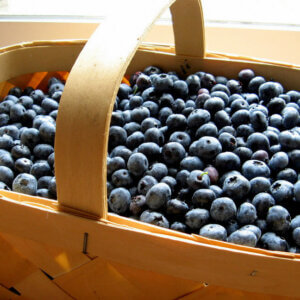


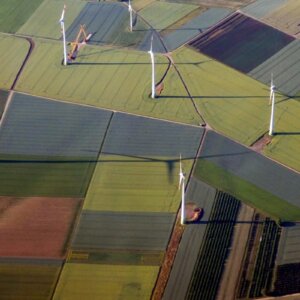



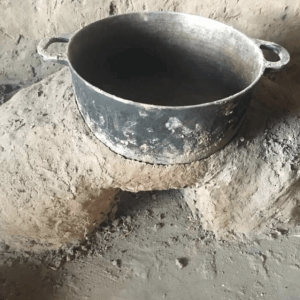
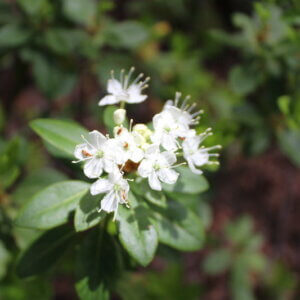
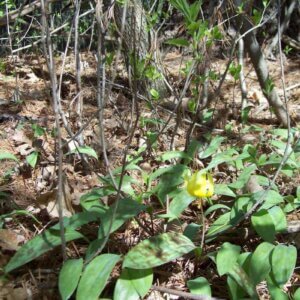
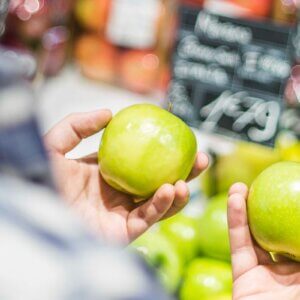
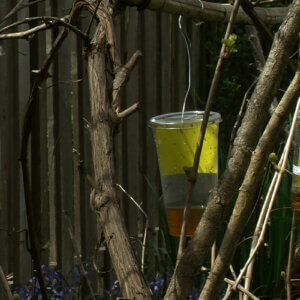


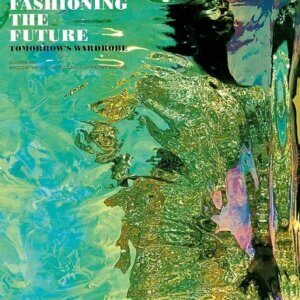

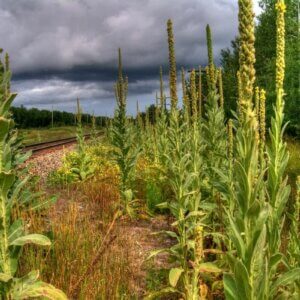








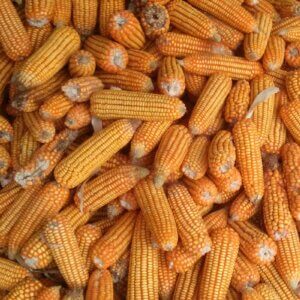




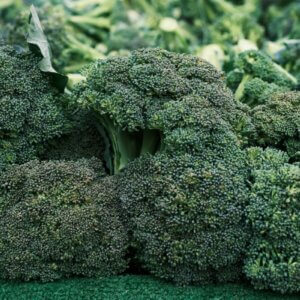
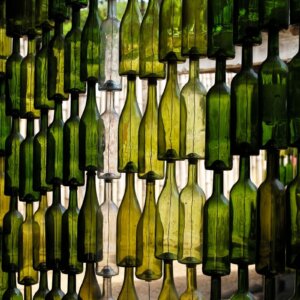




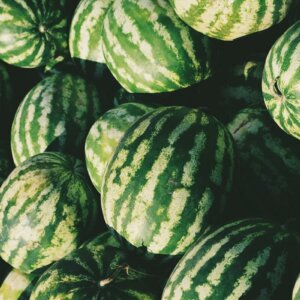
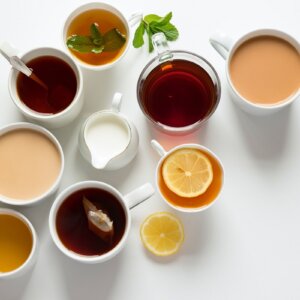
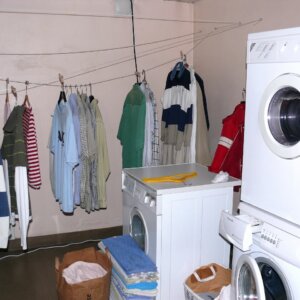
Leave a Reply